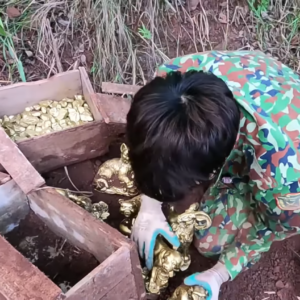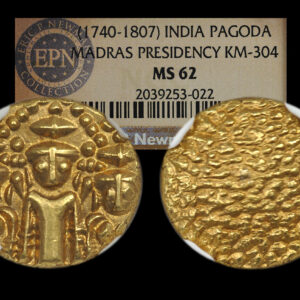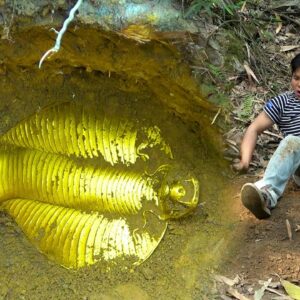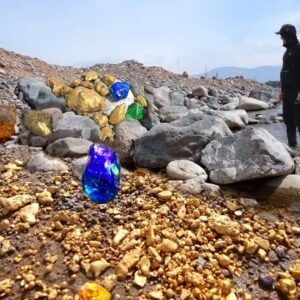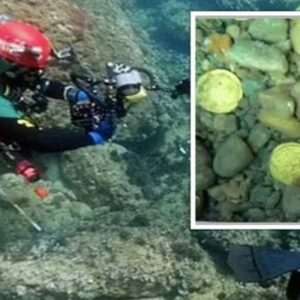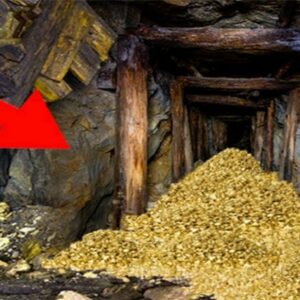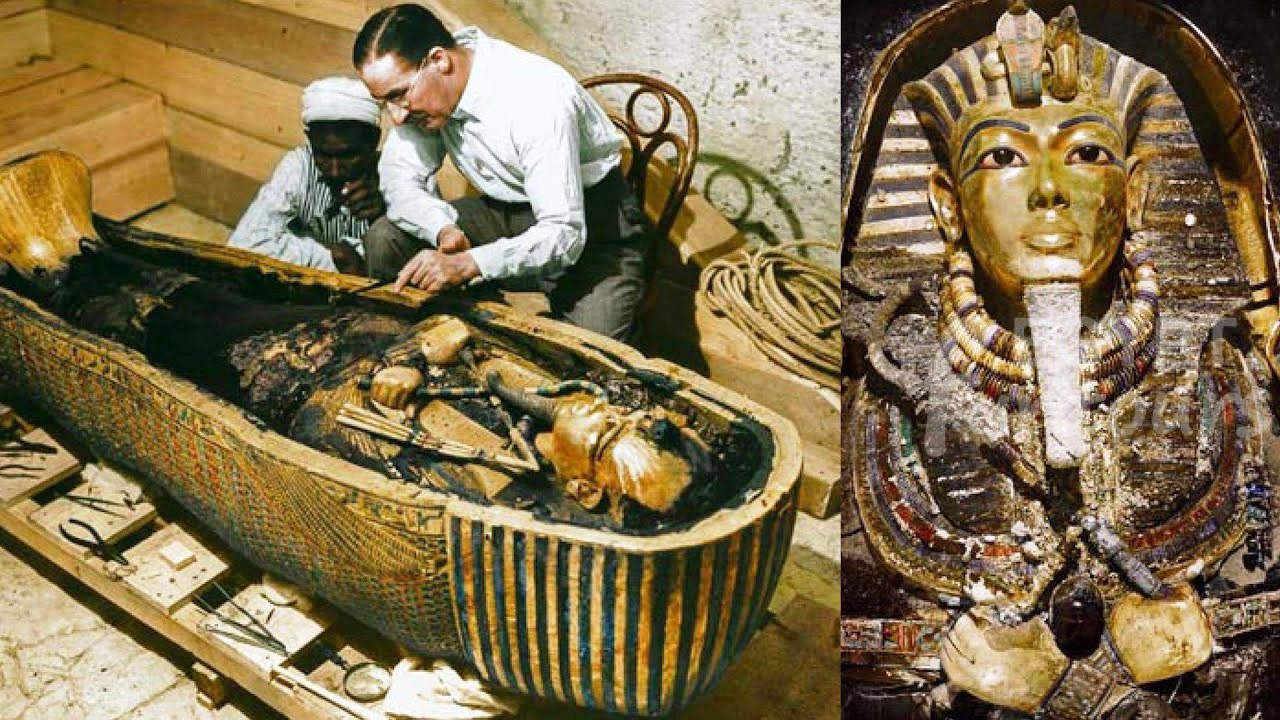
Archaeologists were shocked when they first entered the tomb of King Tutankhamun – the most famous Pharaoh of ancient Egypt, everywhere illuminated by gold.
In 1922, Howard Carter, an English Egyptologist and archaeologist, and Lord Carnarvon – an English aristocrat, discovered the tomb of King Tut, who ruled Egypt from 1332-1323 BC in a good condition. almost intact.
People found inside the tomb thousands of priceless artifacts, including the pharaoh’s mummy sarcophagus. And it took nearly 8 years for people to detail all the artifacts inside.
Below are photos of the artifacts found inside the tomb of King Tutankhamun. The catacombs have 3 compartments and the sarcophagus containing the pharaoh’s body is kept in the innermost compartment.
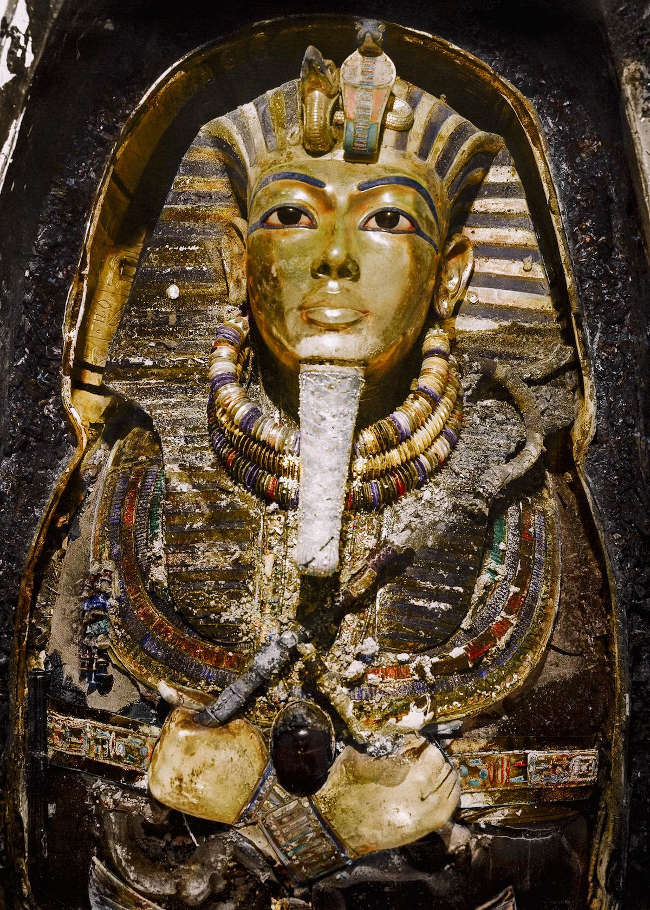
The burial mask of Pharaoh Tutankhamun, currently on display at the Cairo Museum, Egypt. This mask has become one of the symbols of the ancient Egyptian civilization.
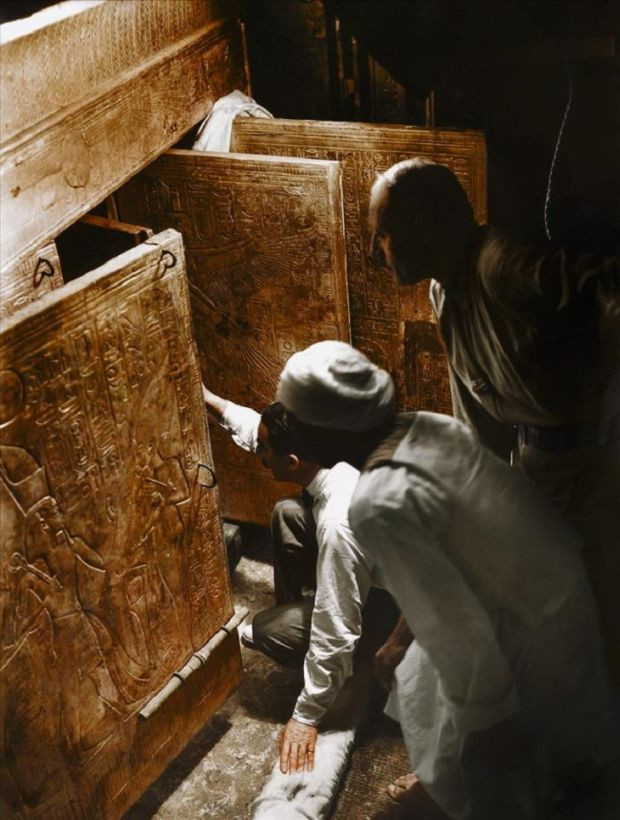
Archaeologists opened the doors leading into the deepest corner of the mausoleum.
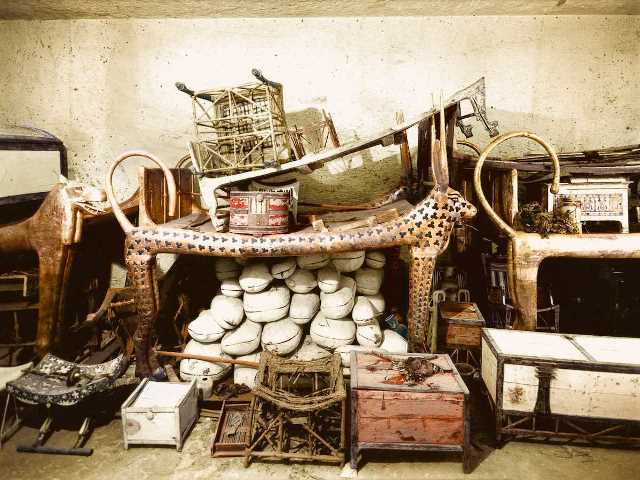
Countless offerings were buried under Pharaoh Tutankhamun.
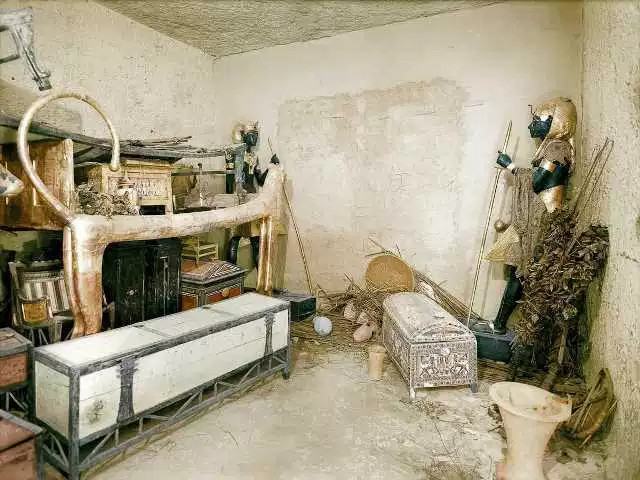
Dressers, gilded lion beds and many other household items were also buried with the Pharaoh. Even archaeologists discovered in the tomb many statues depicting soldiers guarding the eternal sleep for Pharaoh.
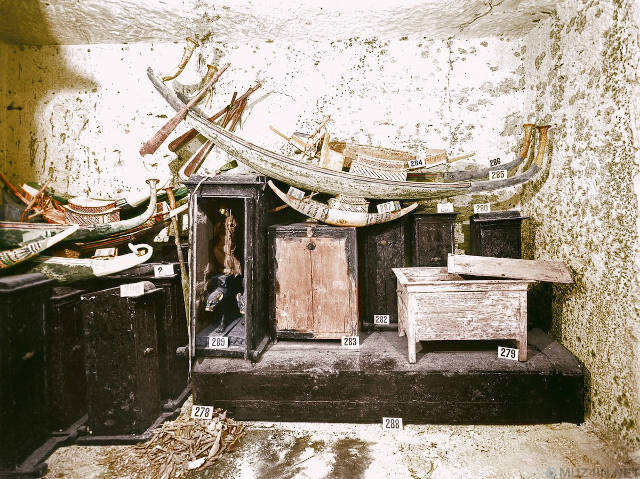
There are about 35 miniature boats buried according to the Pharaoh, to transport the king across streams to the afterlife.
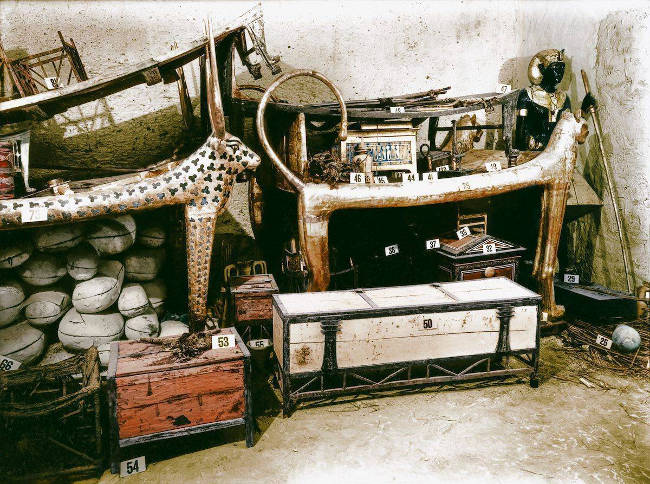
All of these burial items are elaborately gilded. They still retain their original beauty after thousands of years.
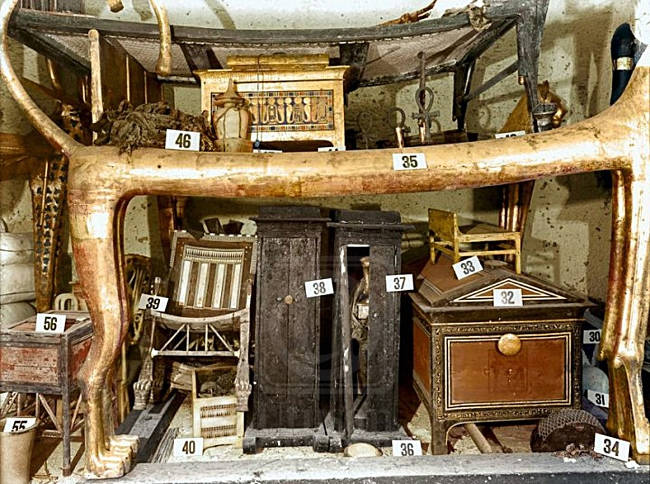
Among the pharaoh’s burial items was a small ebony chair with ivory embellishments that was used by the king as a child.
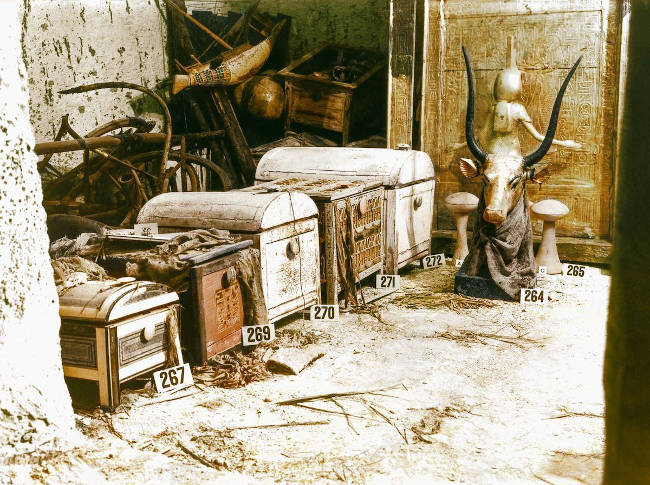
A gilded bust of the goddess Mehet-Weret (goddess of water and sun) flanked by many chests in the tomb.
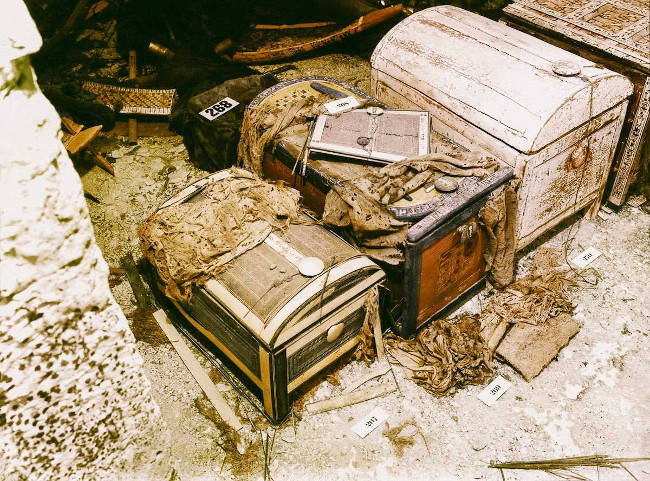
The chests hold many jewelry, clothes and even cosmetics. They are made from ivory, ebony, and Egyptian redwood.
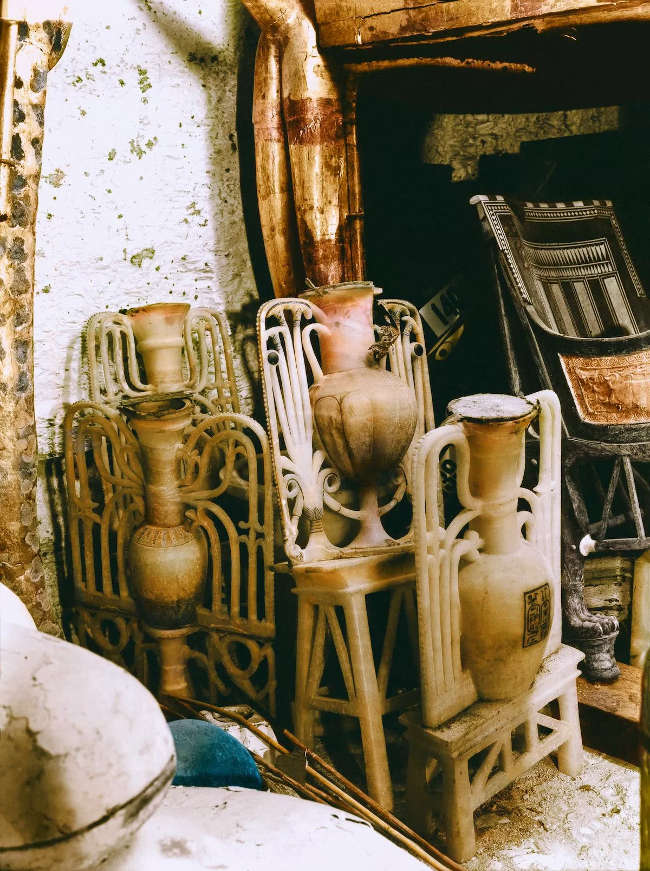
The jars are elaborately crafted of plaster.
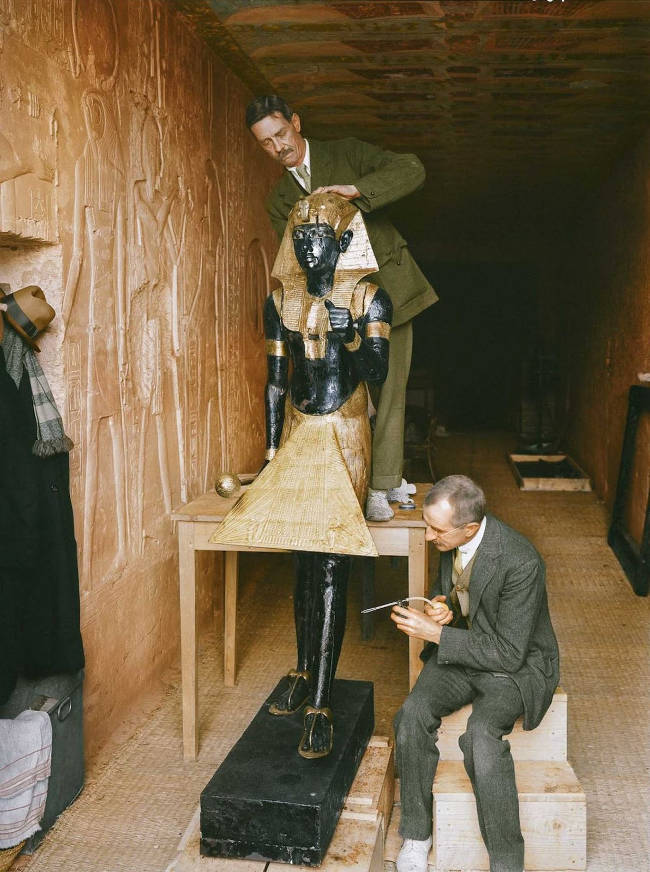
A statue of a guard is being cleaned right in the crypt.
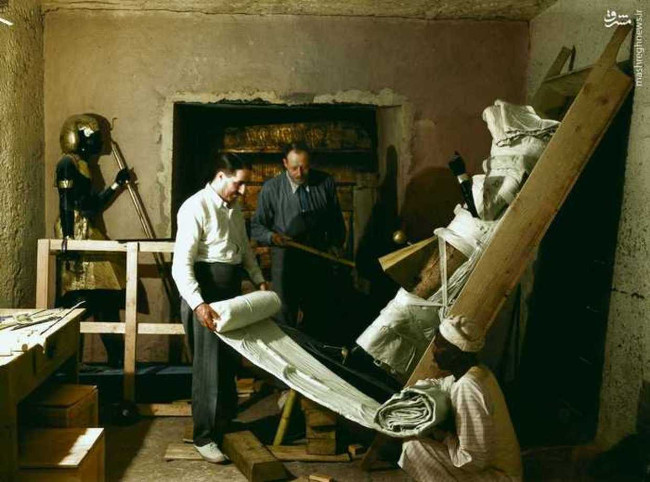
Howard Carter, Arthur Callender, and an Egyptian worker wrap a statue of a sentinel with cloth to prepare for relocation.
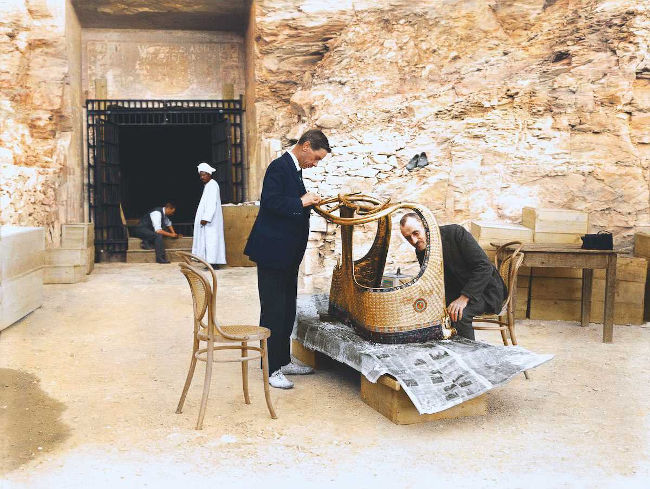
Arthur Mace and Alfred Lucas are examining a golden chariot frame.
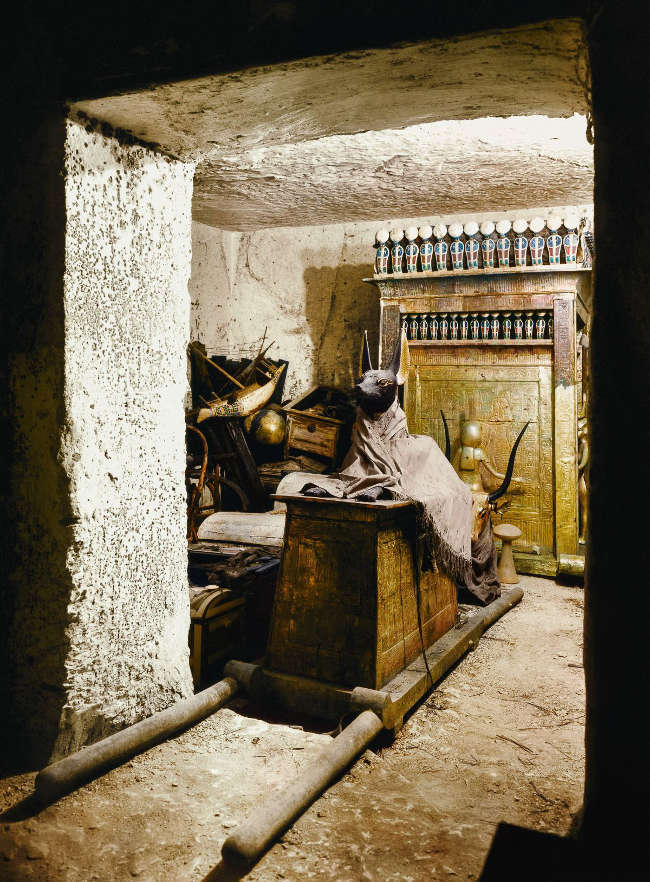
The statue of Anubis (the god who protected the dead and the mummies in ancient Egyptian culture) is placed on a throne with swingarms.
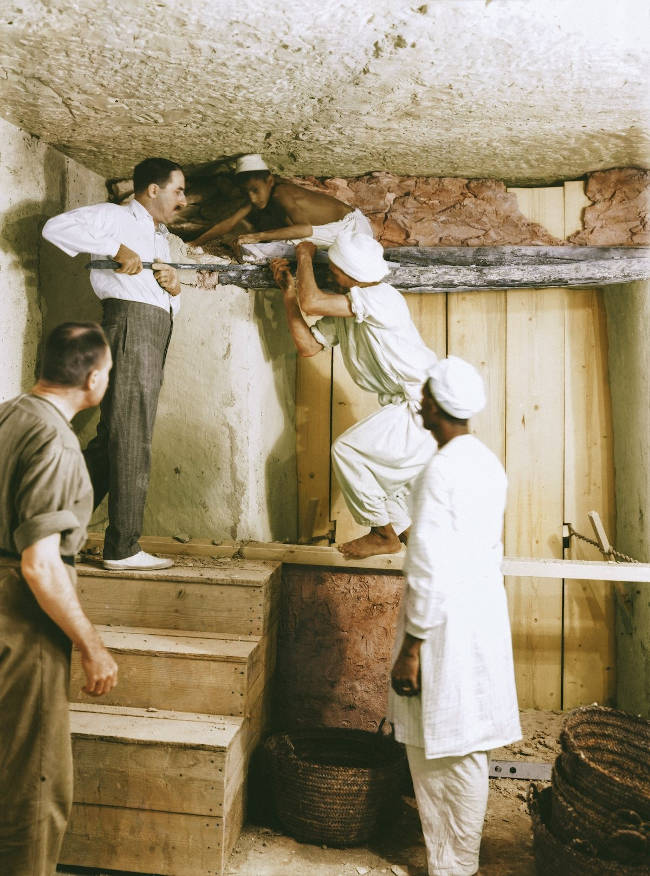
The wall separating the outer chamber and the burial space inside the crypt was removed.
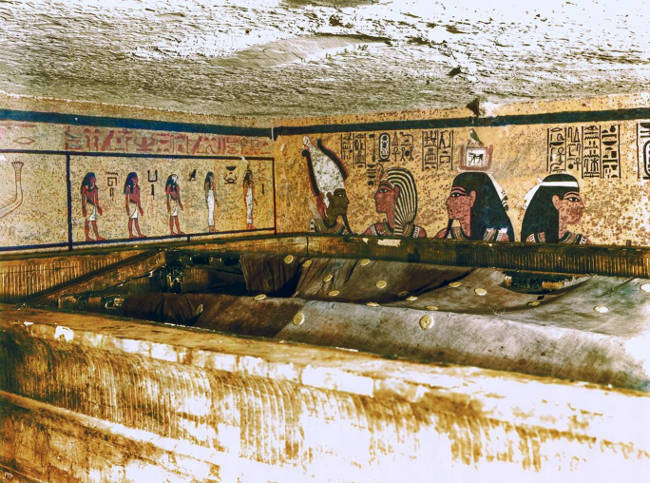
A large linen cloth with golden ornaments reminiscent of the night sky and twinkling stars is placed in the deepest corner of the burial chamber.
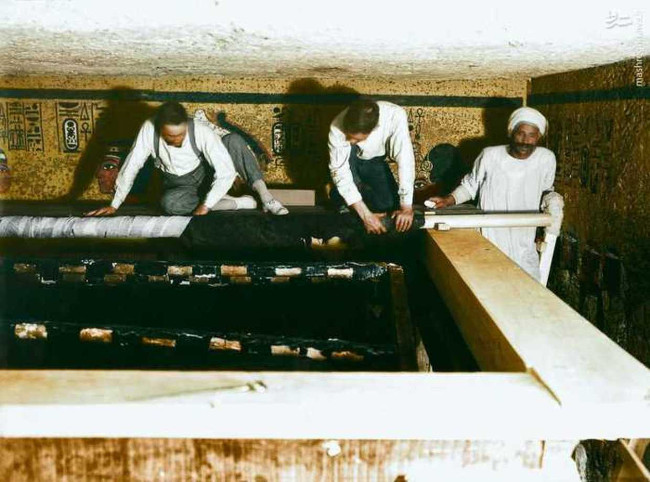
The fabric is carefully rolled up.
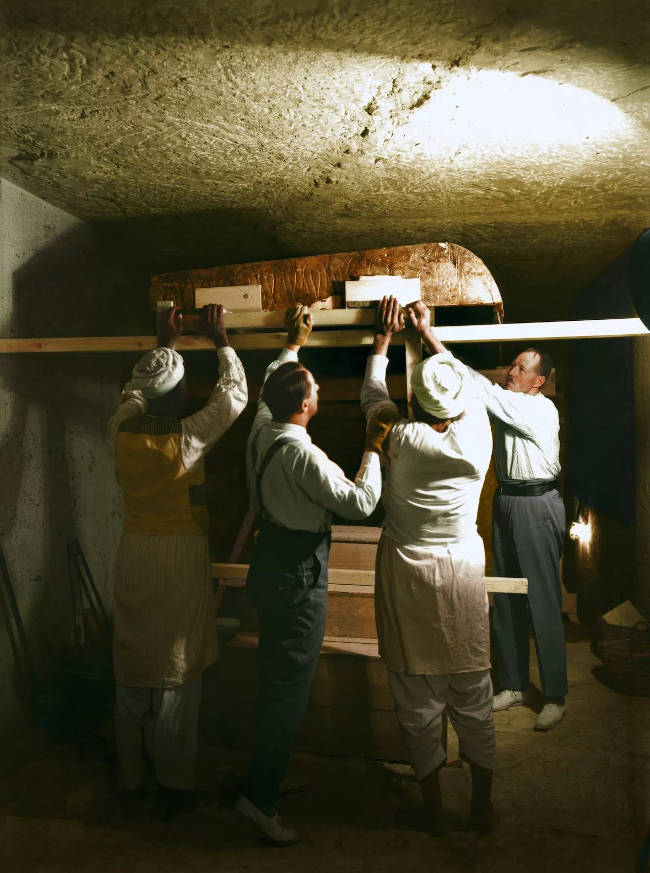
Carter, Callender and two Egyptian workers carefully remove the lid of the coffin, which is cast in gold.
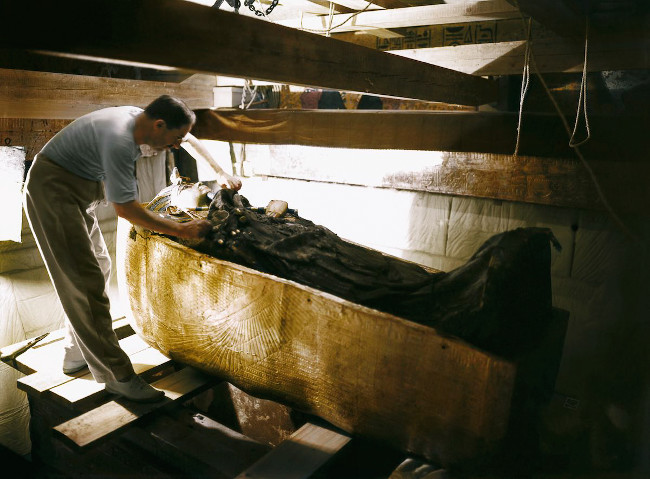
Archaeologist Howard Carter is carefully examining the body of Pharaoh Tutankhamun.
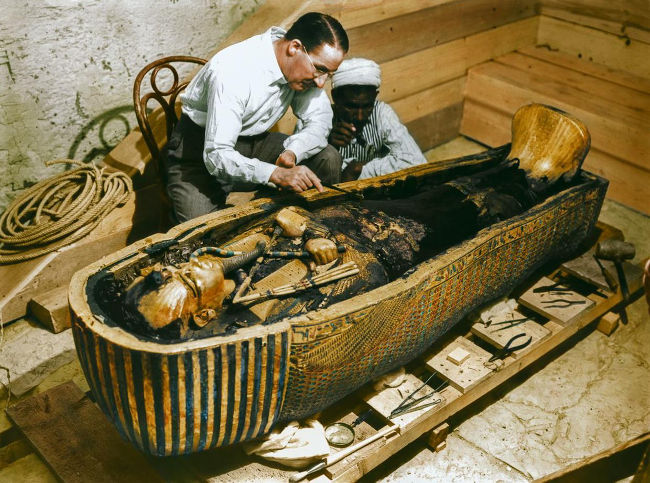
Carter and an officer are examining the golden sarcophagus.
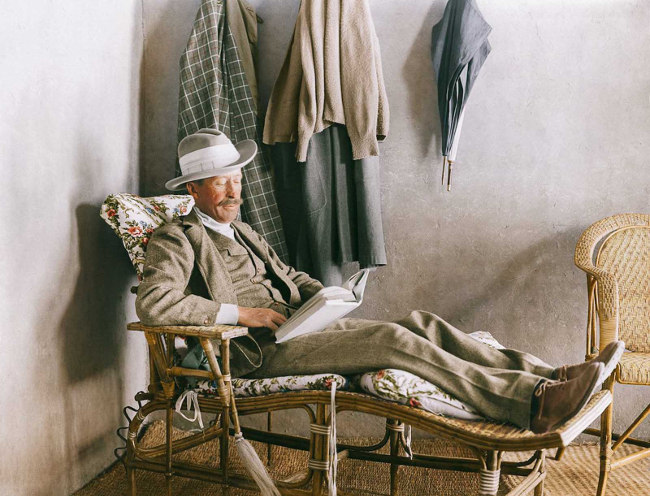
Lord Carnarvon, who funded the archaeological team, was reading a book on Carter’s porch near the valley where the tombs reside.
